Special assignment
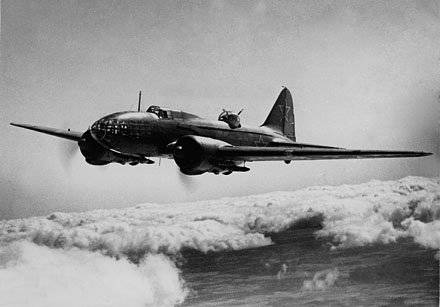
Seventy years ago, in August 1941, when the battles for Leningrad and Odessa were in full swing, when there were fierce battles for Kiev and Smolensk, and the German aviation made several massive raids on Moscow, the command of the Navy and Baltic aviation fleet One of the most resonant air operations for all four military years was planned and carried out - systematic raids on the capital of Nazi Germany.
Among those who three times opened the bombs of his plane over Berlin, was Hero of the Soviet Union, Major General of Aviation Alexander Ivanovich Shaposhnikov. However, he became a hero and general later. And at the end of the summer of forty-one, a long-range bomber from an island airfield raised a young pilot who was under thirty in the night front sky.
Once sky sick
The imperialist and civilians left Sasha Shaposhnikov a complete orphan. Therefore, as soon as circumstances allowed, the lad went from his native village Lyskovo to the provincial center - Nizhny Novgorod. There he was identified as a student of a turner at one of the city enterprises, in the same place he graduated from the school of working youth. In the 1932 year, on the fifteenth anniversary of the proletarian revolution, the guy was rewarded for shock work ... with a plane flight. It was then that, rising into the air as a passenger in the back cabin of a training biplane and seeing the earth from a bird's eye view for the first time, he fell ill forever in the sky.
Two years later, Alexander was drafted into the army and sent to study at an aviation school. After its graduation, Shaposhnikov’s military man turned out to be in the Far East - the most troubled place at that time. And although it did not happen then to participate in battles with the Japanese, service in the harsh region hardened her character and allowed her to gain rich practical experience.
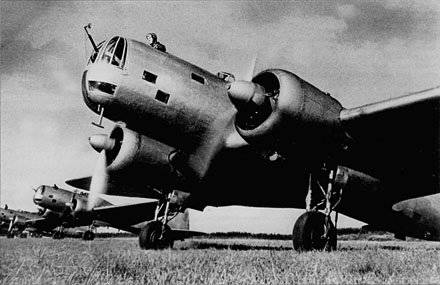
All this was useful in the thirty-ninth, when Alexander, who had already become deputy commander of the bomber squadron, was on the Finnish front. After that short war, a new medal “For Courage” flashed on his tunic.
22 June 1941, the crews of the long-range bomber regiment were alerted. On the construction, the commander briefly brought the situation: the war, about which so much talked, for which so tensely prepared and which they did not want to believe, began. True, it did not start as planned. The enemy is already on our land, attacking garrisons and fortifications, bombing cities and ports. The regiment was tasked with delivering a bomb strike to a cluster of manpower and equipment ... in the region of Koenigsberg! The first group of aircraft is led by the castle Shaposhnikov.
So, by the will of fate and the order, Alexander Ivanovich had already on the first day of the war to lead his pilots to the bombardment of enemy territory. At about 10 hours, the quadruple DB-3 F (IL-4) broke off the ground and headed west. We walked at the utmost height, without the cover of fighters. Perhaps that is why, moreover, because none of the fascists could have imagined such audacity on the part of the Soviet air force, this first raid on enemy territory went like clockwork: neither attacks from the ground nor fighter attacks.
Hell in heaven
The crew of Shaposhnikov had to experience a full-fledged hell in the air only on the next, second day of the war, when Alexander Ivanovich brought six bombers to attack fuel depots near Kenizit. Below are the explosions of anti-aircraft shells, from above and from the sides are machine-gun lines of Messerschmitts.
Arrow radio operator Konstantin Efimov managed to set fire to one, in the heat of the battle carelessly exposing the board and "belly". But after another attack of fighters in Shaposhnikov’s headphones it sounded: “I was wounded ... my legs were broken ... everything, commander ...”. By this time, the right motor Elah was already burning, the left one was working intermittently. As soon as they dragged across the border, Alexander ordered the navigator and the air gunner to leave the car engulfed in flames. He himself was thrown out last, biting his lips to the blood from annoyance, that he could no longer help a seriously wounded (do not bring, god) or a dead (better way!) Radio operator.
For twelve days, he walked along the German rear, chasing the front, rolling back east. To their Shaposhnikov managed to get only near Polotsk. The explanations with the city commandant and the Chekists were short-lived: the captain retained the documents, and the answer sent to the regiment’s request came quickly. And on July 7, Alexander was embraced by his colleagues, who did not want to see him alive ...
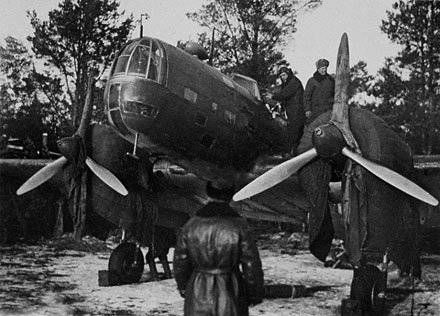
During the four years of the war, Shaposhnikov was shot down twice more. Then, in July forty-one, two days after his return, he joined the combat work of the regiment. The long-range Il-4 bombers, capable of hanging in the sky for six to seven hours, now had three or four times a day in the air: the front was close ...
Special assignment
In early August, an unexpected command entered the regiment: stop combat flights, fly over to Ezel island (Saarema) - the largest among the Moonzund islands in the Baltic Sea - and wait for further orders.
There were many questions. Why stop air strikes frantically tearing east tank the wedges of the German armies? Why fly to some island lost in the sea when the front was already 300-400 kilometers east? But orders are not discussed ...
Meanwhile, "at the very top" was what happened. 22 July 1941 of the year German aircraft conducted the first massive airstrike on Moscow, which was reflected. On July 24, the Germans repeated the bombing, this time they were able to dump tons of high-explosive and incendiary bombs on the 300 capital. On July 26, the People's Commissar of the Navy, Admiral N. G. Kuznetsov, at a meeting with Stalin, suggested that he should conduct a return bombardment of Berlin by the forces of the Baltic Fleet aviation from the Kagul airfield on the island of Ezel in the Moonsund archipelago. Stalin approved the plan, and the next day, the commander of the aviation regiment of the 8 of the air force of the Baltic Fleet, Colonel E. N. Preobrazhensky, received an order: to make a bombing attack on Berlin and its military industrial facilities. The immediate command of the operation was entrusted to Lieutenant-General S. Zhavoronkov, commander of naval aviation.
For the strike, it was planned to use long-range bombers DB-3, DB-ZF (IL-4), as well as new TB-7 and Ep-2 air forces and naval aviation, which, taking into account the maximum radius of action, could reach Berlin and return. Since the distance to the target was about 900 km in one direction, 1765 km in both directions, of which over the sea 1400 km, the success of the operation depended on the fulfillment of several conditions. Namely: the flight was necessary to perform at high altitude, to have on board only 500 kilograms of bomb load and go back strictly in a straight line.
On July 28, General Zhavoronkov flew to the village of Carefree near Leningrad, where the Preobrazhensky air regiment was based. The operation was being prepared in a mode of increased secrecy; only the commander of the Baltic Fleet, Vice-Admiral V. F. Tributs, and the Commander of the Air Force of the Baltic Fleet, Major General M. I. Samokhin, were devoted to the situation. To strike at Berlin, 15 regiment crews were selected. The commander of the special strike group was appointed commander of the regiment Colonel Preobrazhensky, flag navigator - Captain Khokhlov.
On August 2, a sea caravan consisting of minesweepers and self-propelled barges came out of Kronstadt in conditions of increased secrecy and under strong guard. It housed a supply of bombs and aviation fuel, steel plates for lengthening the runway, two tractors, a bulldozer, a tamping skating rink, and all the rear facilities for the flight and technical personnel of a special strike group. After passing through the mined Gulf of Finland and going to Tallinn, which was already besieged by the Germans, in the morning of August 3 the caravan approached the quays of the island of Ezel and began unloading.
The previous night, a test flight was made from the Kagul airfield: several crews, having a fuel supply to Berlin, flew to investigate the weather and dropped bombs on Swinemünde.
On August 4, a special strike group flew over to the island and began to prepare for a special mission. The next day, the crews received flight cards. Landmarks were clearly marked on them (they are also spare targets) for the upcoming flights: Königsberg, Danzig, Stettin. And the main goal is Berlin! Strike the capital of the Reich when the imperial propaganda minister Dr. Goebbels trumpeted to the whole world that Soviet aviation no longer existed, and the Reichsmarschall Goering swore to the Führer that no house in the cities of Germany would shudder from bombings ...
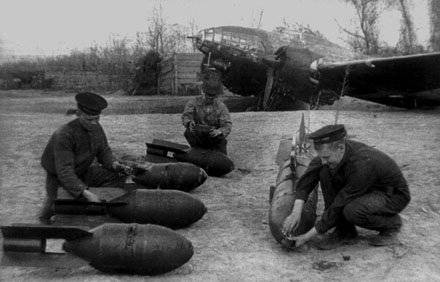
On the night of August 6, five crews set off on a reconnaissance flight to Berlin. It was found that the anti-aircraft defense is located in a ring around the city within a radius of 100 km and has a lot of searchlights capable of acting up to 6000 meters in height. In the evening of August 6, the crews of the first group of bombers received a combat mission ...
Retribution
The first Soviet aviation raid on Berlin took place on the night of 7 on August 8 1941. In 21.00, a special attack group of X-NUMX bombers DB-15, led by the regimental commander Colonel Preobrazhensky and flag navigator Khokhlov, rose from the airfield. The links were commanded by captains Grechishnikov and Efremov. Holding a system, captain Alexander Shaposhnikov was driving his car.
The flight took place over the sea at an altitude of 7000 m along the route Island Ezel (Saarema) - Swinemünde - Stettin - Berlin. The temperature overboard reached minus 35 – 40 ° C, which is why the cab windows and glasses of the headsets froze. In addition, the pilots had to work all these hours in oxygen masks and in complete silence: throughout the route, airing was strictly prohibited.
Three hours later, the aircraft reached the northern border of Germany. When flying over its territory, our bombers were repeatedly found from German observation posts. But they were taken for their own, and the German air defense did not open fire. Above Stettin, the Germans, using spotlights, believing that the Luftwaffe aces were returning from the bombing of the British Isles, even offered the crews of Soviet aircraft to board the nearest airfield ...
The capital of the Third Reich, glowing with all the lights, the first five saw half an hour before approaching. Obviously, still not fully aware of the reality of what is happening, Preobrazhensky led the group over all of Berlin from north to south. Silence! They made a U-turn, orientated, found targets - military factories on the north-eastern outskirts of the city. Stood on the combat course. A minute later the team sounded: "Reset!".
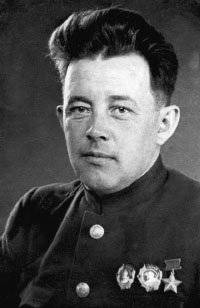 Far below, flashes of explosions flashed, the flames of the outbreak of fires danced. Anti-aircraft guns opened indiscriminate fire, plunged into the darkness of the street and square. The war came to the capital of the state, which unleashed it. Retribution has happened!
Far below, flashes of explosions flashed, the flames of the outbreak of fires danced. Anti-aircraft guns opened indiscriminate fire, plunged into the darkness of the street and square. The war came to the capital of the state, which unleashed it. Retribution has happened!The German air defense did not allow the pilots to fully control the results of the bombing attack: its activity so increased in seconds that radio operator of the commanding crew Vasily Krotenko, interrupting with the permission of Preobrazhensky’s radio silence, said on the air: “My place is Berlin! The task is completed. Back to the base! ”.
Less than a minute after the first explosions, dozens of fighter jets flew over the sky over Berlin, flashing hundreds of searchlights. Therefore, the second and third links were bombed along the Berlin suburb - Stettin. And after the leading group lay on the opposite course.
On 4 in the morning of August 8, after a seven-hour flight, all the vehicles of a special group returned to the airfield without loss. Exhausted from nervous and physical stress pilots in exhaustion descended to the ground directly under the planes of the bombers. They were raked into the arms of jubilant technicians, thrown up, poked their fingers in the chest, showing where it was necessary to “drill a hole” for awards. But the pilots and navigators had only one desire - to sleep!
... Despite the fact that the first bombing of Berlin did not cause significant damage, it had a huge psychological effect and resonance throughout the world.
On the morning of August 8, the Berlin radio broadcast a message: “Last night, large British aviation forces in the number of 150 aircraft tried to bomb our capital. Of the 15 aircraft that had broken through to the city, 9 was shot down. ”
Literally an hour later, the answer to the bewildered BBC followed: "The German report on the bombing of Berlin is interesting and mysterious, since neither the 7 nor the 8 of August British aircraft flew over Berlin."
Until noon Moscow paused. And exactly at 12 hours, the Soviet Information Bureau transmitted a message from the Soviet government that our aircraft successfully bombed the capital of Nazi Germany, as a result of the bombing in the city there were explosions and fires, and all the planes returned to their bases. On the same day, the text of this message was published by Izvestia.
It is said that the Fuhrer was furious. The Reichsmarschall Goering, who assured that “not a single bomb falls on the Reich capital,” and the propaganda minister, Dr. Goebbels, who hastened to bury Soviet aviation in his statements, also got it. And the former military aviation attache of Germany, who for several years before the war in the Soviet Union was unable to obtain reliable information about the presence of bombers of this class in the Soviets, was shot.
Second damn lump
The success of the first raid on the enemy capital and the apparent ease with which it was made, caused euphoria from the Soviet leadership. It was immediately ordered to make the bombing of Berlin regular and massive.
On August 8, the commander of the aviation division Hero of the Soviet Union, Major General M. V. Vodopyanov (winner of the Golden Star of the Hero of the Soviet Union No. 6 for rescuing Chelyuskinites) personally received from Stalin the following order: “T-shu Vodopyanov. Oblige the 81 th air division led by the commander of the division com. T. Vodopyanov from 9.08 to 10.08 or one of the following days, depending on weather conditions, to make a raid on Berlin. In addition to high-explosive bombs, it is also necessary to drop incendiary small and large caliber bombs on Berlin. In the event that the engines begin to pass on the way to Berlin, have as a backup target for the bombing of Koenigsberg. I. Stalin. 8.08.41
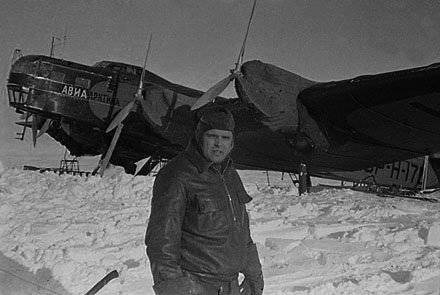
Vodopyanov together with General PF Zhigarev, head of the Red Army Air Force, began to prepare the division for the task. The calculations showed that the TB-7 and Ep-2 bombers with the 4000 kg bomb load (of which 2000 kg on the external suspension) could from the Pushkino airfield fly to Berlin and return. After a thorough check, the generals selected 16 Ep-2 and 10 TB-7, one of which was to be led personally by Vodopyanov.
In the evening of August 10, loaded and loaded to the eyeballs, bombers one by one began to get off the ground and head for Berlin. And here Yer-2 captain Molodchiy broke the chassis, not having time to break away from the runway and drove into the drainage ditch behind the runway end. On the TB-7 of Major Egorov taking off after him, immediately after being taken off the ground, two right engines refused, and the plane, crashing to the ground, turned into a huge bonfire. After that, General Zhigarev stopped the departure of the rest of the bombers. As a result, only seven TB-7 and three Er-2 went to Berlin. Only six cars could be bombed on target. Only two returned back to Pushkino ...
The fate of the crew of General Vodopyanova developed as follows. Even when he was climbing, the TB-7 was attacked by fighters, got holes, but reached the target and bombed around Berlin. After that, it came under anti-aircraft fire, was damaged and made an emergency landing in the German-occupied territory of Estonia. Only two days later, the missing crew safely went out to their own.
After that, General Vodopyanov, despite all previous achievements, was dismissed from the post of division commander, and Colonel A. E. Golovanov, the future chief air marshal and commander of long-range Soviet aviation, was appointed to replace him.
"We flew under God, near the very paradise ..."
And yet raids on Berlin became regular. And it was possible to do this all the same special group of Colonel Preobrazhensky, reinforced by another fourteen aircraft DB-3 F (IL-4). The next time his pilots attacked the capital of Germany on the night of August 11, then - on the night of 13. And then - through the night until September 5, until the Germans began bombing the discovered airfield of Cahul. On September 17, the fascists seized a bridgehead on the southern coast of the island of Ezel and began to quickly build up their forces to fully capture it. A special group of Preobrazhensky received a team to fly to one of the Moscow region airfields ...
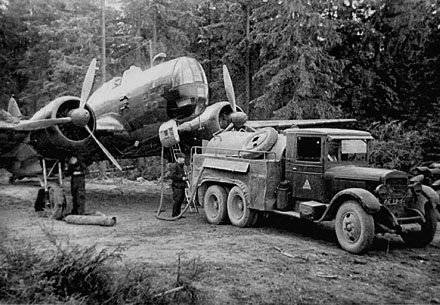
After the war, meticulous historians have calculated that for the entire 1941 year, British pilots dropped 35,5 tons of bombs to the German capital. And just in a month, E. N Preobrazhensky’s special air group “unloaded” almost 22 tons over Berlin over just one month!
In general, the statistics of the Soviet raids on Berlin is as follows. 86 departures were made. 33 cars broke through to the city, 37 could not reach the capital of Germany and attacked other cities. In total, 311 high explosive and incendiary bombs with a total weight of 36050 kg were consumed. In addition to them, 34 agitbombs with leaflets were dropped. 16 aircraft for various reasons, interrupted the flight and returned to the airfield. During the raids, 17 bombers and 7 crews were lost, and the 2 of the aircraft and the 1 crew died at the airfield when they tried to take off from the 1000-kilogram and two 500-kilogram bombs on external hangers.
13 August 1941 to the pilots who participated in the first raid on Berlin - Colonel Preobrazhensky, captains Grechishnikov, Plotkin, Efremov and Khokhlov - was awarded the title Hero of the Soviet Union. In September, five more pilots of a special group became Heroes. In late summer - early fall of the forty first 13 pilots were awarded the Order of Lenin, 55 people - the Order of the Red Banner and the Red Star.
In August, 1941, Captain Shaposhnikov, twice saw Berlin under the wing of his bomber. During one of the sorties the pilot was injured and was treated at the hospital. Perhaps that is why he was awarded the title of Hero of the Soviet Union a little later than the other fellow soldiers - 29 March 1942.
During the war years, Alexander Ivanovich happened to fly his bomber over Moscow and Stalingrad, over the Kursk Bulge and Belarusian forests, over the Carpathians and many cities of European countries.
In the spring of the forty-fifth the planes of the Guards long-range bomber regiment commanded by Lieutenant Colonel Shaposhnikov were again among the first to strike at Berlin. On the last day of the war, Alexander Ivanovich made his 318 combat mission.
But that was not the end of his heavenly service. Even after graduating from the General Staff Academy in November 1955, and taking command of the aviation division, he continued to fly a lot and selflessly. In his flight book, it is recorded that General Shaposhnikov mastered the 15 types of combat aircraft on which he made 5406 sorties, having spent a total of 3958 hours in the air. To the already solid list of military awards of the renowned pilot during the years of peaceful service were added the orders of the Red Star and the Red Banner of Labor.
In the 1967, Alexander Ivanovich was gone. Today the streets are named after Heroes in Prioksky district of Nizhny Novgorod and his hometown Lyskovo.
Information